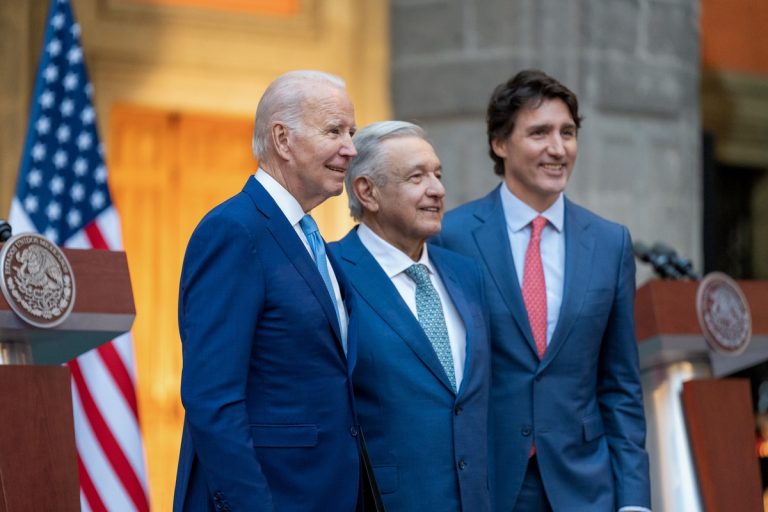
Analysis of American-Mexican-Canadian Relations in 2024
Mexico City, Mexico. In 2024, the trilateral relationship between the United States, Mexico, and Canada remains a cornerstone of North American stability and prosperity. Anchored by the United States-Mexico-Canada Agreement (USMCA), the partnership between these three nations continues to evolve, characterized by robust economic ties, collaborative security efforts, and a commitment to addressing shared challenges.
Economic Integration and Trade
Economic integration remains the bedrock of American-Mexican-Canadian relations. The USMCA, which replaced NAFTA in 2020, has strengthened trade and investment across North America. This agreement continues to facilitate the flow of goods and services, reduce trade barriers, and enhance economic cooperation among the three countries.
In 2024, the economic ties between the United States, Mexico, and Canada are stronger than ever. The three nations benefit from an integrated supply chain that supports key industries such as automotive, agriculture, technology, and energy. The agreement’s provisions on labor rights, environmental standards, and digital trade have also modernized the economic relationship, ensuring it meets contemporary challenges and opportunities.
Supply Chain Resilience and Innovation
The COVID-19 pandemic underscored the importance of resilient supply chains. In response, the three countries have intensified their cooperation to enhance supply chain security and mitigate disruptions. This includes efforts to diversify supply sources, increase domestic production capacities, and invest in critical infrastructure.
Innovation is another key focus area. Collaborative initiatives in research and development, particularly in sectors like renewable energy, biotechnology, and advanced manufacturing, are driving technological advancements and economic growth. The shared commitment to fostering innovation ensures that North America remains competitive in the global economy.
Security and Border Management
Security cooperation is a critical aspect of the trilateral relationship. The United States, Mexico, and Canada work closely on a range of security issues, including counterterrorism, drug trafficking, and border management. The integration of law enforcement efforts and intelligence sharing has enhanced the region’s ability to address transnational threats.
Border management, particularly the US-Mexico and US-Canada borders, remains a complex but vital area of cooperation. The focus is on ensuring secure and efficient borders that facilitate trade and travel while preventing illegal activities. Initiatives such as trusted traveler programs and enhanced border infrastructure are key components of this strategy.
Climate Change and Environmental Cooperation
In 2024, addressing climate change is a top priority for all three countries. The USMCA includes provisions for environmental protection, and the nations have committed to collaborative efforts to reduce greenhouse gas emissions and promote sustainable practices.
Joint initiatives on renewable energy, conservation, and climate resilience are central to the environmental agenda. The North American Climate Partnership, for example, focuses on accelerating the transition to clean energy, protecting biodiversity, and enhancing climate adaptation strategies.
Migration and Human Rights
Migration is a significant issue that requires coordinated efforts. The United States, Mexico, and Canada are working together to address the root causes of migration, such as economic instability and violence in Central America. Humanitarian assistance, development programs, and regional cooperation are integral to these efforts.
Human rights are also a key concern. Ensuring the humane treatment of migrants, protecting the rights of indigenous communities, and addressing social inequalities are shared objectives. Collaborative approaches to these issues are essential for maintaining social stability and promoting human dignity.
Political and Diplomatic Engagement
High-level diplomatic engagement is a hallmark of the trilateral relationship. Regular summits, ministerial meetings, and dialogues facilitate cooperation on a wide range of issues. These interactions underscore the commitment to maintaining a strong and collaborative partnership.
The geopolitical landscape, including relations with China and other global powers, necessitates close coordination. The United States, Mexico, and Canada recognize the importance of working together to navigate global challenges and uphold shared democratic values.
Challenges and Opportunities
Despite the strong relationship, challenges persist. Trade disputes, immigration policies, and environmental concerns can strain the partnership. However, the resilience of the trilateral relationship lies in the ability to address these challenges through dialogue and negotiation.
Opportunities for collaboration are vast. Enhancing economic integration, addressing climate change, improving border security, and fostering innovation are areas with significant potential for further cooperation. The shared commitment to these goals ensures that the trilateral relationship will continue to thrive.
Conclusion
In 2024, the relationship between the United States, Mexico, and Canada is characterized by deep economic integration, collaborative security efforts, and a commitment to addressing shared challenges. The USMCA has strengthened economic ties, while joint initiatives on climate change, migration, and innovation highlight the dynamic nature of this partnership. As these three nations continue to work together, the trilateral relationship will remain a pivotal force in shaping the future of North America and contributing to global stability and prosperity.
[draft]
Where Are Are We Now with North American Relations? (Jan. 20, 2023) [draft]
Photo: U.S. President Joe Biden poses with Mexican President Andres Manuel Lopez Obrador and Canadian Prime Minister Justin Trudeau after delivering a joint statement at North American Leaders’ Summit, Jan. 10, 2023, National Palace in Mexico City. Credit: Official White House Photo by Adam Schultz.